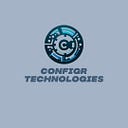Kickstart Your Flutter Journey
Cross-Platform Application Development Simplified
Flutter is Google’s powerful cross-platform UI development framework that is rapidly gaining popularity.
It enables developers to build stunning, performant apps for iOS, Android, web, and desktop using a single codebase.
In this quick starter guide, we’ll explore how to create your first Flutter application, providing step-by-step instructions and valuable insights for beginners.
Key Advantages of Flutter
Before we dive into the development process, let’s explore why Flutter is a compelling choice for app development:
- Cross-Platform Development: Write once, run everywhere. A single Flutter codebase powers apps across multiple platforms.
- Fast Development: Flutter’s hot reload feature makes development incredibly fast, allowing you to see changes reflected near-instantaneously.
- Beautiful UI: Flutter’s rich widget library and customizable themes help you craft visually appealing interfaces.
- Excellent Performance: With its Dart programming language and native-like rendering, Flutter apps are smooth and responsive.
- Growing Community: Flutter boasts a vibrant, supportive community, offering extensive resources and assistance.
Setting Up Your Flutter Environment
System Requirements: Ensure your computer meets Flutter’s minimum system requirements (check the official documentation).
Install Flutter:
- Download the Flutter SDK from the official website (https://docs.flutter.dev/get-started/install).
- Follow platform-specific installation instructions.
Install an IDE or Editor:
- Android Studio or IntelliJ IDEA are recommended for their robust Flutter support.
- Alternatively, Visual Studio Code with the Flutter extension provides excellent tooling.
Configure Environment Variables: Add the Flutter SDK’s bin directory to your system's PATH for easy access to tools.
Verify Installation: In your terminal or command prompt, run flutter doctor to confirm correct environment setup. Resolve any issues that appear.
Creating Your First Flutter Project
Open your IDE/Editor: Launch your chosen development environment.
Create a New Flutter Project:
- Use the IDE’s “New Flutter Project” wizard or…
- From the terminal, run:
flutter create my_first_app
Project Structure: Familiarize yourself with the generated project structure:
lib/main.dart: Contains the main entry point of your application.pubspec.yaml: Manages project dependencies.
Understanding the Basic Code
Open the main.dart file. Here's a breakdown of the default code:
import 'package:flutter/material.dart';
void main() => runApp(MyApp());
class MyApp extends StatelessWidget {
@override
Widget build(BuildContext context) {
return MaterialApp(
title: 'Flutter Demo',
theme: ThemeData(
primarySwatch: Colors.blue,
),
home: MyHomePage(title: 'Flutter Demo Home Page'),
);
}
}
class MyHomePage extends StatefulWidget {
// ...
}main(): The starting point of your Flutter app.runApp(): Initializes and inflates the root widget of your app.MyApp: AStatelessWidget, the foundation of the app's widget structure.MaterialApp: Provides Material Design styling and functionality.MyHomePage: AStatefulWidget, a dynamic widget with state.
Widgets: The Building Blocks of Flutter
Flutter embraces a declarative UI paradigm where everything is a widget. Widgets are the core components used to structure and define the visual appearance and behavior of your app. There are two primary types of widgets:
- StatelessWidget: Widgets that don’t change state over time (e.g., Text, Icon).
- StatefulWidget: Widgets that hold state that can change, causing them to rebuild (e.g., buttons with counters).
Building the User Interface
Let’s create a simple ‘Hello World’ app to illustrate basic widget usage:
// Inside the MyHomePage class
int _counter = 0; // Declare a state variable
void _incrementCounter() {
setState(() { // Function to update the state
_counter++;
});
}
@override
Widget build(BuildContext context) {
return Scaffold(
appBar: AppBar(
title: Text(widget.title), // Access title from parent widget
),
body: Center(
child: Column(
mainAxisAlignment: MainAxisAlignment.center,
children: <Widget>[
Text(
'You have pushed the button this many times:',
),
Text(
'$_counter', // Display the counter value
style: Theme.of(context).textTheme.headline4,
),
],
),
),
floatingActionButton: FloatingActionButton(
onPressed: _incrementCounter,
tooltip: 'Increment',
child: Icon(Icons.add),
),
);
}Explanation
State Management: The _counter variable tracks the button press count (state). setState() tells Flutter to rebuild the widget when the state changes.
Layout Widgets:
Scaffold: Provides a basic app layout template.AppBar: The top bar of your app.Center: Centers content within its parent.Column: Arranges widgets vertically.
Text Widgets: Used to display text.
FloatingActionButton: A round button that ‘floats’ over the UI.
Running Your App
Connect a Device or Emulator:
- Plug in a physical Android or iOS device (with developer mode enabled).
- Or, launch an Android emulator or iOS simulator within your IDE.
Run the Command: From your project’s root directory in the terminal: flutter run
Hot Reload: Make changes to your code, save them, and witness the near-instant updates in your running app thanks to Flutter’s hot reload!
Customizing Your App
Now let’s add some styling and interactions:
- Themes: Flutter provides the
ThemeDataclass to customize app-wide appearance:
theme: ThemeData(
brightness: Brightness.dark, // Use a dark theme
primaryColor: Colors.deepPurple
),- Buttons & Inputs: Enhance interactivity with Flutter’s rich set of input widgets:
TextField(), // For text input
ElevatedButton(onPressed: () {}, child: Text('Submit'))- Images: Add visual appeal with images:
Image.asset('assets/images/my_image.jpg'), // From project assets
Image.network('https://example.com/image.jpg'), // From the webBeyond the Basics
The world of Flutter is vast. Here are key areas to explore as you progress:
- State Management: For larger apps, consider state management solutions like Provider, BLoC, or Riverpod to organize state effectively.
- Navigation: Implement navigation between screens using
Navigator. - Networking: Make HTTP requests to fetch and interact with data from web APIs.
- Complex Layouts: Master more advanced widgets like
Row,Gridview, andStack. - Firebase Integration: Leverage Firebase for real-time databases, authentication, and more.
Flutter is a young framework, but its rapid evolution and passionate community are a testament to its immense potential.
As Flutter matures, expect even greater capabilities and streamlined development workflows.
Follow me on Medium, LinkedIn, and Facebook.
Clap my articles if you find them useful, drop comments below, and subscribe to me here on Medium for updates on when I post my latest articles.
Want to help support my future writing endeavors?
You can do any of the above things and/or “Buy me a cup of coffee.”
It would be greatly appreciated!
Last and most important, have a great day!
Regards,
